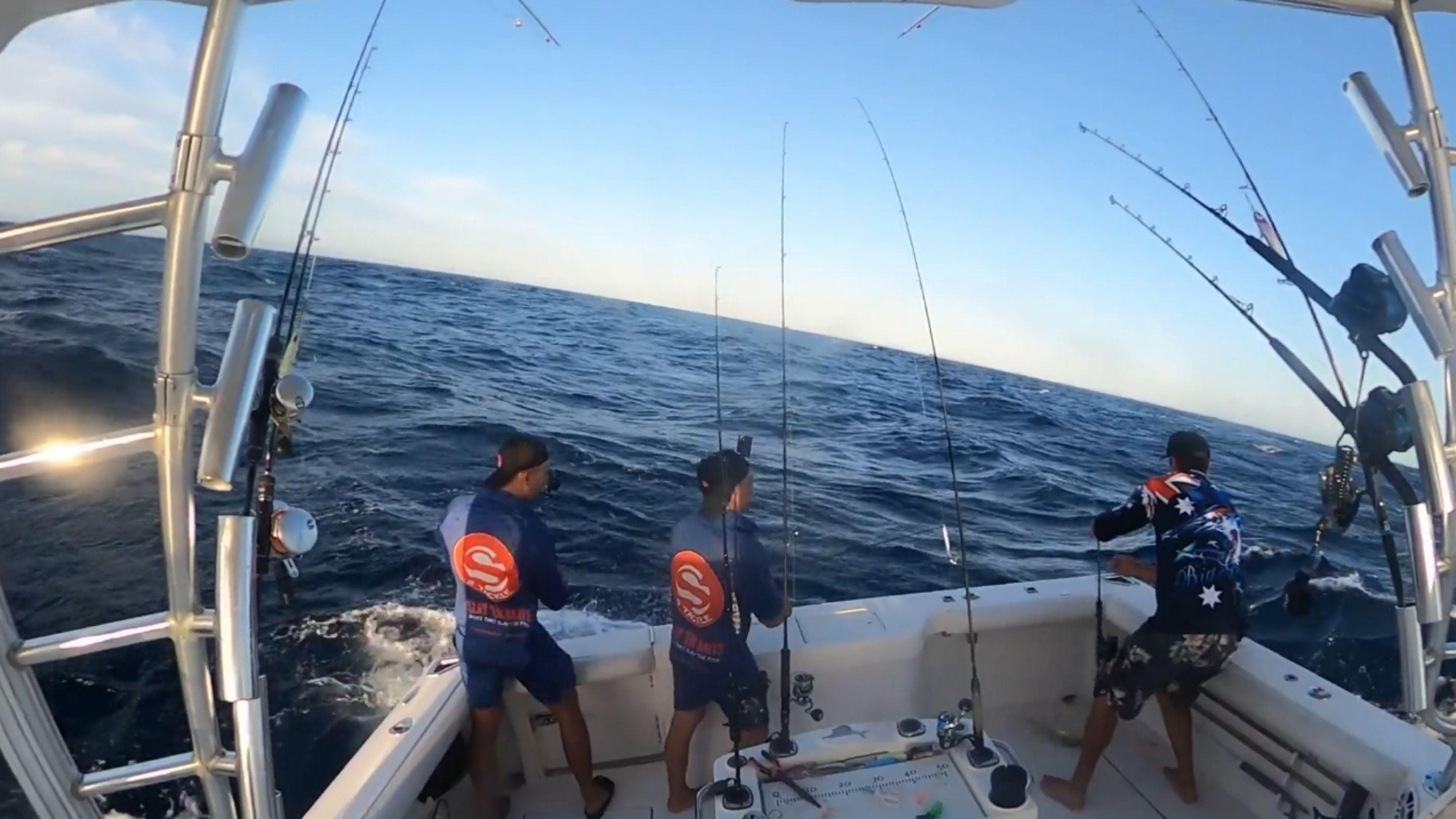Whether you're just starting with lures or fine-tuning your gear, the right fishing setup makes all the difference. Below are 17 proven tackle shop tips to help you fish smarter, cast better, and catch more.
🎣 17 Pro Tips for the Best Fishing Setup
1. Use a Graphite Rod, Not Fiberglass
Graphite rods are lighter, more sensitive, and offer better casting accuracy—ideal for working lures with precision.
2. Match Your Rod’s Casting Weight to Your Lures
Always check the rod’s casting weight rating and don’t exceed it. Going too heavy can break the rod tip over time.
3. Go Heavy if You’re Fishing Tight Structure
Targeting areas like mangroves or bridge pylons? Choose a rod with extra power to muscle fish out fast before they snag you.
4. Fish Lighter in Open Water
Fishing sandbanks or open flats? You can run a lighter rod setup for a more finesse feel and fun fight.
5. Know Your Target Species
Some fish like flathead are clean fighters. Others, like Mangrove Jack, will dirty fight you into snags—so choose your rod accordingly.
6. Stick With a 7-Foot Rod for Versatility
If you’re unsure, start with a 7-foot rod. It’s a great all-rounder for both casting distance and accuracy.
7. Understand Rod Taper for Lure Action
- Soft taper: Best for light lures and keeping small hooks pinned.
- Fast taper: Perfect for strong hooksets.
- Medium taper: A balanced choice for mixed lure types.
8. Choose the Right Reel Size
- 2000–3000: Inshore and light estuary fishing.
- 5000+: Offshore and heavier targets.
Match the size to your rod and species.
9. Compare Drag Ratings Between Models
Don’t assume all reels of the same size have equal drag power. A smooth, strong drag helps you land bigger fish cleanly.
10. Choose the Spool Type Based on Depth
- Shallow spool: Ideal for light lines and finesse casting.
- Deep spool: Holds more line for long runs and bigger fish.
11. Use High Gear Reels for Fast Fish
If you need to quickly recover slack or chase down fish, a high-speed reel can make or break your hookup.
12. Spool Your Reel With Braid for Lures
Braid has no stretch, which gives you maximum sensitivity and better hooksets. It's also thinner, so you get more line on your spool.
13. Add a Fluorocarbon Leader
Use fluoro leaders to reduce visibility and increase bite rates—especially in clear water or with spooky fish.
14. Upgrade to Abrasion-Resistant Leader in Structure
Fishing around rocks, trees, or reef? Go for abrasion-resistant fluoro to avoid bust-offs.
15. Adjust Leader Length to Conditions
A good general length is 50–80 cm, but increase it in clear water or when targeting leader-shy fish.
16. Keep Your Setup Balanced
Make sure your rod, reel, line, and leader work together as a system. Don’t mismatch a heavy reel with a light rod—it’ll feel awkward and won’t perform right.
17. Trust Your Setup and Fish With Confidence
Once your gear is dialed in, tie that lure on and cast with confidence. The best setup is the one you trust to do the job.
FAQs: Best Fishing Setup Tips
Q1: What’s the best beginner setup for lure fishing?
A 7-foot medium-fast graphite rod, 2500 spinning reel, 10 lb braid, and 12 lb fluorocarbon leader.
Q2: Can I use one setup for everything?
You can use a general-purpose medium setup for most inshore work, but fine-tuning gear improves your catch rate.
Q3: What’s better—braid or mono?
For lures, braid is better. It's more sensitive, casts farther, and gives better hooksets.
Q4: Do I really need a leader?
Yes. Fluorocarbon leaders offer abrasion resistance and help avoid spooking fish in clear water.
Q5: What’s the ideal rod for lure casting?
A graphite rod with a medium taper around 7 feet long is a reliable choice for most lure applications.
Q6: How do I know if my drag is good enough?
Test it before you fish. It should be smooth with no jerks. Go for the best drag system your budget allows.


